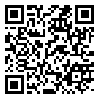Volume 4, Issue 4 (Occupational Medicine Quarterly Journal 2013)
tkj 2013, 4(4): 29-43 |
Back to browse issues page
Download citation:
BibTeX | RIS | EndNote | Medlars | ProCite | Reference Manager | RefWorks
Send citation to:



BibTeX | RIS | EndNote | Medlars | ProCite | Reference Manager | RefWorks
Send citation to:
Kermani A, Mazloumi A, NaslSeraji J, GhasemZadeh F. Identification and evaluation of human errors using SHERPA technique among nurses at emergency ward of an educational hospital in Semnan city, Iran. tkj 2013; 4 (4) :29-43
URL: http://tkj.ssu.ac.ir/article-1-268-en.html
URL: http://tkj.ssu.ac.ir/article-1-268-en.html
Tehran University of medical sciences , amazlomi@sina.tums.ac.ir
Abstract: (14429 Views)
Background: Human error is one of the most important issues in the world and studying these errors among medical occupations like physicians and nursing works to find solutions for identifying and controlling them became imperative. Therefore, current study was conducted with the aim of identification and evaluation of human error using SHERPA (Systematic Human Error Reduction and Prediction Approach) technique among nurses working at the emergency section of an educational hospital in Iran.
Methods: This study was a cross sectional descriptive study conducted using SHERPA method. First, the aim and methodology of the study was explained to the nurses and then the task and subtasks of the nursing activity were determined through interview with the nurses and also by observation of their activities. A job analysis of nursing activity was implemented by HTA (Hierarchical Task Analysis) technique, at the next stage. Finally, the error types for each task and subtasks were determined, based on the SHERPA guideline and, worksheet was finally completed for each of the related error types.
Results: In total, 231 errors were indentified among 65 tasks of the nurses’ clinical activity who worked in the emergency section. The highest percentage of the errors was belonged to the action error with 59.3%, and the rest were 25.55% for checking, 4.33% for retrieval, 2.16% communication, and 8.66% selection errors. Accordingly, the highest percentage of errors was belonged to the action error and the lowest one to communication errors.
Conclusion: According to the findings in this study, action errors (with highest frequency) and checking errors (with highest unacceptable risk level) should be control and prioritized for error reduction program. Meanwhile, SHERPA technique can completely cover medical activities of the nurses and factors such as communication with patient which is not considered in other techniques, can be analyzed using this method.
Type of Study: Research |
Subject:
Ergonomics
Received: 2013/03/26 | Accepted: 2014/01/16 | Published: 2014/01/16
Received: 2013/03/26 | Accepted: 2014/01/16 | Published: 2014/01/16
Send email to the article author
| Rights and permissions | |
 |
This work is licensed under a Creative Commons Attribution-NonCommercial 4.0 International License. |





